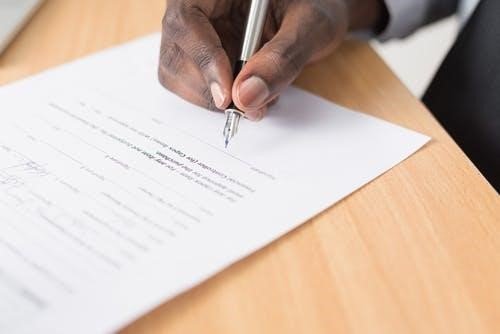How to Handle Insurance Paperwork After an Accident

Dealing with insurance paperwork after an accident can feel overwhelming, especially when you’re already stressed from the incident itself. The mountain of forms, deadlines, and documentation requirements might seem impossible to navigate. However, approaching this process systematically can save you time, money, and unnecessary headaches while ensuring you receive the compensation you deserve.
Immediate Steps: What to Gather First
Essential Documents You Need
Start by collecting all documents related to the accident immediately after the incident occurs. Your insurance policy information should be your first priority, including your policy number, coverage limits, and deductible amounts. Keep both physical and digital copies of these documents accessible.
Obtain a copy of the police report if law enforcement responded to the scene. Most police departments allow you to request reports online or by phone within a few days of the incident. This official document provides crucial details about the accident that insurance companies rely on heavily.
Medical records become vital if injuries occurred during the accident. Request copies of all treatment records, doctor visits, prescription receipts, and rehabilitation appointments. Keep detailed records of all medical expenses, including mileage to appointments and any medical equipment purchases.
Photographic Evidence and Witness Information
Photographs serve as powerful evidence in insurance claims. If you haven’t already, take pictures of vehicle damage, the accident scene, road conditions, traffic signs, and any visible injuries. Multiple angles provide comprehensive documentation that supports your claim.
Collect contact information from all witnesses present at the scene. Their statements can provide objective perspectives that strengthen your position during the claims process. Ask for their names, phone numbers, and brief written statements about what they observed.
Understanding Your Insurance Claim Forms
Deciphering Standard Claim Documents
Insurance companies use standardized forms that can appear complex at first glance. Read through each section carefully before completing any paperwork. Most forms request basic information about the accident date, location, parties involved, and a detailed description of what happened.
Property damage sections require specific details about your vehicle, including year, make, model, and Vehicle Identification Number (VIN). Estimate repair costs if possible, but avoid agreeing to preliminary settlement amounts until you fully understand your coverage.
Medical expense sections need comprehensive documentation of all injury-related costs. List every medical provider you visited, treatment dates, and associated expenses. Include future medical costs if your doctor recommends ongoing treatment or rehabilitation.
State-Specific Requirements
Different states have varying requirements for insurance claims and documentation. Understanding local regulations can significantly impact your claim’s success. For example, learning how to file a car accident claim in Utah involves specific procedures that differ from other states.
Research your state’s insurance laws, statute of limitations for filing claims, and mandatory coverage requirements. This knowledge helps you understand your rights and ensures compliance with all legal obligations during the claims process.
Communicating Effectively with Insurance Companies
Managing Adjuster Interactions
Insurance adjusters will contact you to investigate your claim and determine settlement amounts. Prepare for these conversations by organizing all your documentation beforehand. Answer questions honestly and factually, but avoid speculating about fault or accepting blame for the accident.
Schedule adjuster meetings at convenient times when you can focus completely on the discussion. Take notes during conversations, including the adjuster’s name, contact information, and key points discussed. Follow up important conversations with written summaries sent via email to create paper trails.
Protecting Your Interests
Remember that insurance companies operate as businesses focused on minimizing payouts. While most adjusters are professional and fair, they represent their company’s financial interests, not yours. Review all settlement offers carefully and don’t hesitate to ask questions about calculations or coverage decisions.
Keep detailed records of all communication with insurance representatives. Document phone call dates, times, and conversation summaries. Save all emails and letters related to your claim. This documentation becomes valuable if disputes arise later in the process.
Common Paperwork Pitfalls to Avoid
Timing and Deadline Mistakes
Insurance policies contain specific deadlines for reporting accidents and filing claims. Missing these deadlines can result in claim denials, even for valid accidents. Report your accident to your insurance company within 24 hours when possible, and submit formal claim paperwork as soon as you gather necessary documentation.
Read your policy’s fine print regarding reporting requirements. Some policies require immediate notification, while others allow several days. Understanding these timeframes prevents unnecessary claim complications.
Documentation Oversights
Incomplete or inaccurate paperwork frequently delays claim processing. Double-check all forms for accuracy before submission. Verify that dates, names, addresses, and policy numbers match your official documents exactly.
Maintain copies of everything you submit to insurance companies. Create both physical and digital backup copies stored in separate locations. This redundancy protects you if original documents are lost or damaged.
Streamlining Your Paperwork Process
Organization Strategies
Create a dedicated filing system for all accident-related documents. Use labeled folders for different categories such as medical bills, correspondence, estimates, and receipts. Chronological organization within each category makes information easy to locate when needed.
Consider using smartphone apps or cloud storage services to digitize important documents. Digital copies provide convenient access and serve as backups if physical documents are lost or damaged.
Technology Tools
Many insurance companies offer online portals or mobile apps that simplify claim management. These platforms allow you to upload documents, track claim progress, and communicate with adjusters electronically. Utilizing these tools often speeds up the entire claims process.
Spreadsheet software helps track expenses, medical appointments, and communication logs. Creating simple tracking sheets ensures you don’t overlook important details or miss crucial deadlines.
Moving Forward with Confidence
Handling insurance paperwork after an accident requires patience, organization, and attention to detail. While the process may seem daunting initially, following these systematic approaches will help you navigate the requirements successfully.
Remember that you have rights as a policyholder, and thorough documentation strengthens your position throughout the claims process. Stay organized, communicate clearly, and don’t hesitate to seek professional assistance if complex issues arise.
Your diligent efforts in managing this paperwork today will ensure you receive fair compensation and can focus on recovery and moving forward from this challenging experience.



